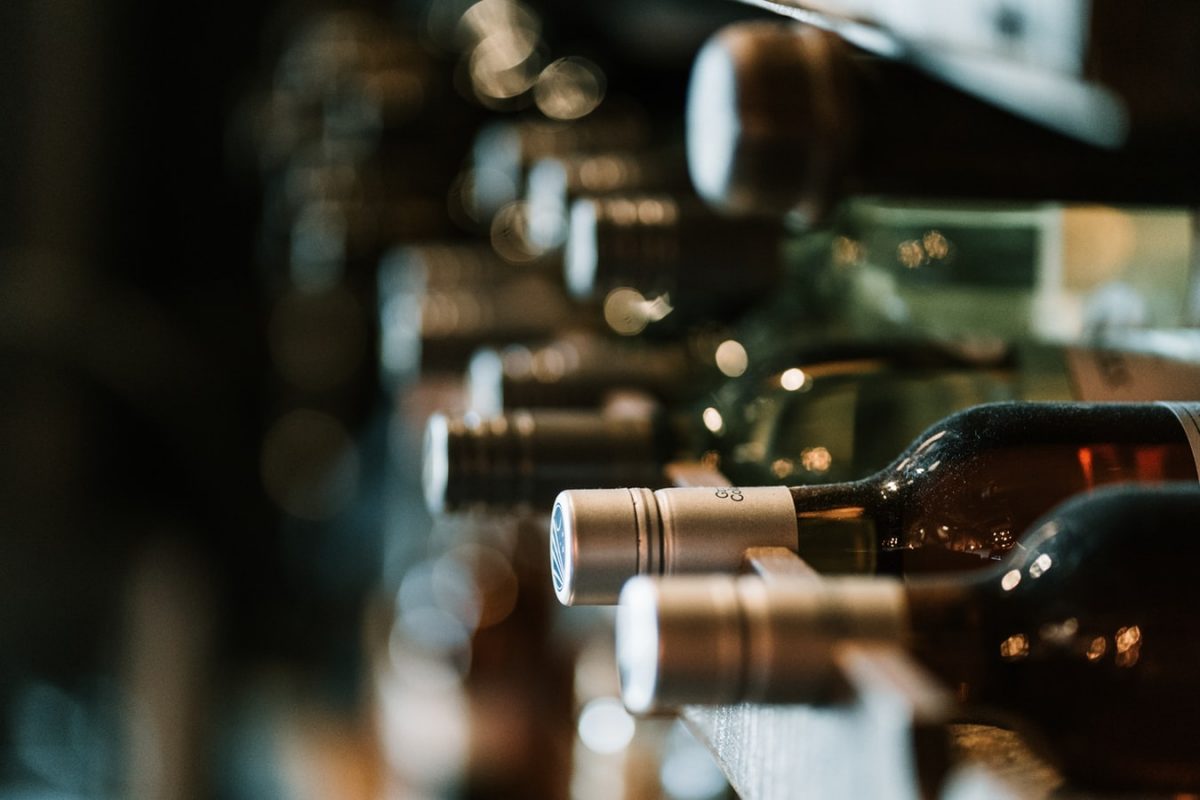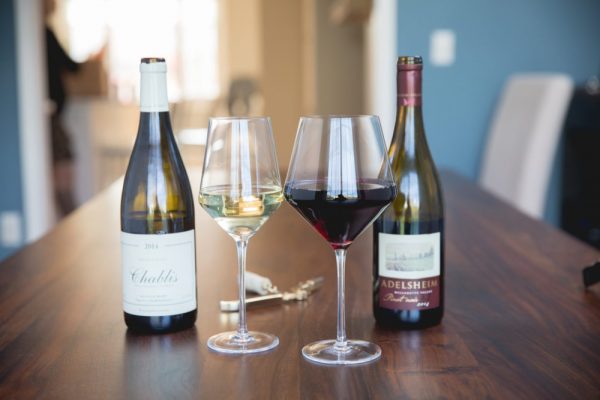

Where do you store your wine? On a bar cart? Your kitchen counter? In one of those built-in wine cubbies above your fridge?
How long can a bottle sit there before you crack it open? A week? A month? A year or more? Do you chill it before you drink it?
Truth be told, where and how long you store your wine, and at what temperature you serve it definitively matter. Under the right environmental conditions, wine will age gracefully. Under the wrong conditions, it will oxidize and otherwise degrade, leaving you with a wine that tastes nothing like the winemaker intended.
When it comes time to finally drink your bottle, serving temperature is equally as important. How cold or warm a wine is affects how you will perceive its tannins, acidity, fruit, and aromatics. That means, the same bottle of wine can taste round and delicious at one temperature and completely out balance just a few degrees in either direction.
To make the most out of each and every bottle you purchase, follow these tips for proper wine storage and service.
Storing Your Wine: Short-Term vs. Long-Term Service
Only a small fraction of wine produced is suitable for aging. Most bottles (like practically any wine you buy $30 or less) should be consumed relatively quickly. If held under the right conditions, “quickly” may be as long as a few years. But in most cases you are simply staving off deterioration rather than actually improving the wine in the bottle.
Optimal Short-Term Storage Conditions
If you have a professional-grade wine cellar, by all means store your everyday wine there. Otherwise, inexpensive wines will be fine if they are kept consistently cool (but not too cold) and out of the way of light. A temperature of 53 to 57 degrees is best. That goes for red and white.
Because it is typically set at around 40 degrees, your kitchen fridge is too cold for proper wine storage beyond a few weeks (and too dry at that). A dedicated wine refrigerator or cooler is ideal. Wine refrigerators can be set to an optimal storage temperature and are designed to retain humidity (which keeps corks moist) rather than drive it out. They also come in a variety of sizes to fit a multitude of spaces and collections.

Optimal Long-Term Storage Conditions
Wines that appropriate for aging are generally quite expensive and require more controlled conditions. When held properly, the wines that fall into this category evolve and can improve for years or even decades after they are bottled.
For wines you intend to hold to for that length of time, you need an environment that is:
- Dark. Exposure to ultraviolet rays is harmful to the delicate flavors and aromatics in wine.
- Cool and temperature stable. 53 to 57 degree is ideal, and the temperature shouldn’t fluctuate. Warmer temperatures age wines too quickly. Cooler temperatures stunt the development and evolution of volatile flavor compounds.
- Humid. Humidity levels of 70% help keep corks moist. Dry corks permit air into the bottle, which causes unpleasant oxidation.
- Still. Vibrations can agitate sediment in wines. That same agitation could also conceivably speed up the chemical reactions occurring on the molecular level in the bottle.
Your long-term storage solution should also accommodate bottles laid on their sides. In this positions, the corks stay moist. (Note that if a bottle has a screw top, it wasn’t meant to be aged in the first place.)
Some people are fortunate enough to have basements that check all the above boxes. Otherwise, wine collectors outfit a room in their home with environmental controls or purchase a cabinet equipped with temperature and humidity settings, and vibration and UV protections. Both options are significant purchases that not all wine collections warrant. But if you spending thousands of dollars per year on wine, it is probably worth protecting your investment with a professional grade aging system.
Ideal Wine Serving Temperature

In addition to short-term wine storage, wine refrigerators / coolers can be used to hold bottles at proper serving temperature. Proper serving temperature is not always equal to proper storage temperature, and it varies between wine styles and from varietal to varietal.
In general, chilling a wine brings out its fruit, acid, and tannins. So bright and refreshing whites like a sauvignon blanc should be consumed colder than, say, an oaked chardonnay. And a tart and berry-forward beajolais is at its best a few degrees colder than, say, an astringent red bordeaux.
Red Wine Serving Temperature
It is a misconception that a red wine should be served at room temperature, which would put it somewhere near 70 degrees.
On the contrary, all reds benefit from being served slightly colder than room temperature--somewhere between 58 and 65 degrees, depending on the exact style and/or varietal. In general, complex, mature wines should be served on the warmer end of that spectrum (61 to 65 degrees), which allows drinker to appreciate the full potential of their bouquet. Tannic reds should also be served in the 61 to 65 degree range, since cooler temperatures tend to exaggerate their astringency. Lighter reds, especially those with decent acidity, should be served colder. 55 degrees is appropriate.
For a drilled down look at recommended serving temperatures for different varieties and styles of red wine, refer to the chart below.
White Wine Serving Temperature
White wines should be served colder than reds but not so cold as to mute whites’ already more delicate aromatics. That means you should chill your bottle to somewhere between 45 and 55 degrees, depending on the grape and style. As a general rule, complex, medium- and full-bodied whites should be served on the warmer end of that range, while lighter whites should be served colder to maximize their refreshing qualities. Sparkling whites are served very cold to maintain their crisp carbonation. Sweet white wines are also generally best quite chilled, since warm temperatures can make them seem cloying.
The chart below details specific proper serving temperature for different kinds of white wine.
Serving Temperatures by Varietal / Style

| Grape / Style | Serving Temperature |
|---|---|
| Ice wine | 43-45 F |
| Sauternes | 43-45 F |
| Sparkling Wines | 43-45 F |
| Chenin Blanc | 45 F |
| Pinot Gris / Grigio | 45 F |
| Rosé | 45 F |
| Sauvignon Blanc | 45 F |
| Riesling | 50 F |
| Viognier | 50 F |
| Gewürztraminer | 50 F |
| Chardonnay | 50-55 F |
| White Bordeaux Blends | 50-55 F |
| Beaujolais | 55 F |
| Gamay | 55 F |
| Barbera | 55-60 F |
| Cabernet Franc | 55-60 F |
| Grenache | 55-60 F |
| Pinot Noir | 55-60 F |
| Port | 55-60 F |
| Tempranillo | 55-60 F |
| Cabernet Sauvignon | 60-65 F |
| Merlot | 60-65 F |
| Malbec | 60-65 F |
| Nebbiolo | 60-65 F |
| Red Bordeaux Blends | 60-65 F |
| Sangiovese | 60-65 F |
| Syrah | 60-65 F |
| Zinfandel | 60-65 F |



Leave a Comment